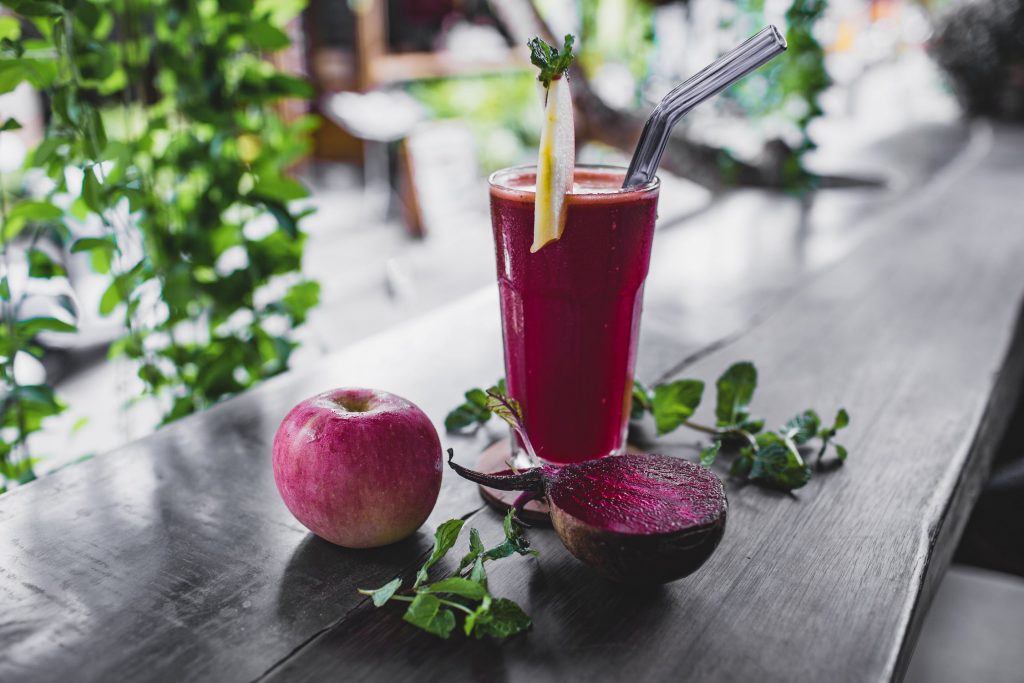Living through the 21st century, we have all witnessed the rise of innumerable complex diseases. Especially since 2020, after the word ‘pandemic’ became super famous, we know that our control over what’s coming is very less, but if there exists even a slight chance to avert, it would be wise to go for it.
The real pandemic lurking out there is Diabetes! It is one of the most common and annoying diseases of the modern age. But don’t worry. It doesn’t mean that you cannot do anything about it. Here’s all that you need to know about it –
What is Diabetes
Diabetes is the body’s inability to control glucose in the blood, leading to elevated blood glucose levels. This can have a detrimental effect on many organs and also creates complications when present with other diseases! There are two types of diabetes – Type 1 & Type 2

What is Insulin and what is its relevance to Diabetes?
Insulin is a hormone secreted by the pancreas, that keeps a check on the blood glucose levels. As blood glucose increases, insulin is secreted which will, in turn, reduce the glucose levels.
Differences Between Type 1 & Type 2 Diabetes
Type 1 Diabetes or Insulin-dependent diabetes is when the body is not producing enough insulin. Type 1 diabetes depends upon your environmental conditions that have adverse effects on the human body. These conditions can sometimes cause an autoimmune reaction within your body, where your body’s defence system (white blood cells) attack the insulin-producing cells, known as beta cells in your pancreas. Thus it lowers/stops the production of insulin, resulting in large glucose levels in your bloodstream.
Type 2 Diabetes is mostly avoidable and is caused due to the inappropriate lifestyle of an individual. The pancreas is still very much producing insulin. However, the body ceases to respond to insulin which results in high sugar levels, eventually causing ‘hyperglycemia’ or diabetes. Fast food, smoking and excessive drinking can immensely contribute to the escalation of this disease.
“There is still a good 50% chance to survive diabetes.
It involves a few simple decisions to be followed in your daily lifestyle.”
Who Gets Affected?
Type 1 diabetes is witnessed mostly in the younger sections of the population – kids and adolescents. Although it constitutes a very small percentage of the total diabetic cases in the world, it could be fairly infuriating to have a daily dose of medication and insulin, right from childhood. This can also be transferred genetically through the mother due to family history.
Type 2 Diabetes is seen in older adults generally, but it is also witnessed in younger adults nowadays due to poor living habits. With an improper lifestyle, many people past their 30 – 40s are now diabetes! Nearly 90% of diabetic cases fall under this section.

What are the Causes?
Type 1 Diabetes is caused due to unavoidable environmental factors. It can also be genetic in nature. The disease is dormant within the human body right from birth, and it acts up later during the teenage.
Type 2 Diabetes is the result of obesity, poor eating habits and lack of sports or physical activity.
Early Symptoms of Diabetes
The symptoms of Type 1 Diabetes are exhaustion, tiredness, weight loss, frequent urination, increase in appetite, hindrance to the vision and wetting your bed.
The symptoms of Type 2 Diabetes include abnormal thirst, numbness, hindrance to vision, slow healing of wounds, dry mouth and frequent urination. The disease can most likely be hidden and hence must be diagnosed once in a while.
How can one Prevent Diabetes?
Type1 Diabetes can only be maintained to a certain extent. In spite of the availability of large healthcare facilities, the world has not yet confirmed a cure for it. Although there is some evidence that overweight in children or obesity can trigger the disease. So your best option is to stay fit right from your teenage. The sooner, the better.
Type 2 Diabetes can be prevented by
- Maintaining a nourishing lifestyle
- Following Healthy food habits
- Engaging in physical activities or sports
- Maintaining your body weight
- Cutting down / Quit smoking
According to the International Federation of Diabetes, a healthy diet includes –
Reducing the amount of calories if you are overweight
- Replacing saturated fats (eg. cream, cheese, butter) with unsaturated fats (eg. avocado, nuts, olive and vegetable oils)
- Eating dietary fibre (eg. fruit, vegetables, whole grains)
- Avoiding tobacco, excessive alcohol and added sugar..

Medications for Diabetes
For Type 2 Diabetes, the most commonly used oral medications are
- Metformin (Biguanide) – It reduces the glucose production in the liver and also reduces the resistance of the body to Insulin. Eg: Glycomet, Gluformin, Glyciphage
- Sulfonylureas – Stimulates the pancreas to increase insulin production. Eg: gliclazide, glipizide, glimepiride, tolbutamide and glibenclamide
- Thiazolidinediones – Decreases insulin resistance and increases glucose utilisation. Eg: Pioz, Pioglit
- AGI (Alpha Glucosidase Inhibitor) – Decreases absorption of glucose in the intestine. Eg:Voglibose, Volibo, Vobose, Glucobay
- DPP4 Inhibitor – They reduce the degradation of incretins and also slow down the stomach emptying and thereby decreasing appetite. Eg : Vildagliptin, Sitagliptin
- GLP-1 Agonist – Reduces appetite and also reduces the secretion of glucagon – the hormone that stimulates hepatic glucose production (i.e glucose production in the liver). Eg: Liraglutide
- SGLT2 Inhibitors – Increases excretion of glucose through urine. Eg: Forxiga, Dapagliflozin
Most of the tablets available are combination drugs, which is a combination of one or more of the above class of medications.
For Type 1 Diabetes, insulin injections are required. Insulin is a protein-based hormone and that is the reason it is injected directly into the bloodstream instead of having it orally as a tablet or syrup! If insulin is consumed orally, it is digested like normal protein-based food! The type of insulin injection, the dosage etc ranges according to the seriousness of the case.
There are 4 types of insulin injections available based on the need and the time of action.
- Rapid Acting – Instant effect to limit the rise of glucose content. Eg: Asparat, Glulisine, Lispro.
- Short-Acting – They are slow-acting and have a gradual effect in limiting glucose levels. Eg: Actrapid, Humulin R, Insuman Rapid
- Intermediate-Acting – They act within an hour of injecting into the body. Eg: Humulin NPH, Protaphane, Insulatard
- Long-Acting – Slow and steady release of insulin. One shot can last up to 24 hours. Eg: Detemir, Glargine
Cost of Medication & Availability of Insulin
For an average Indian individual, medication for diabetes can range anywhere from Rs 1,000 to Rs 5,000 per month*. In case of serious stages, hospital attention would be required for which the costs can range from Rs 40,000 to Rs 1.5 lac! Refer – https://www.ncbi.nlm.nih.gov/pmc/articles/PMC7299136/
Thus It would be sensible for you to prevent this disease, as the costs for insulin are also on the rise. In spite of the huge number of Diabetic patients in the world, there has not been significant aid from the government to reduce the cost. Economic inflation is one major factor contributing to the hike.
Other Risk Factors Involved
Diabetes can result in various life-threatening chronic diseases. One should also keep in mind that there are chances of your diabetes causing failure of other organs in your body.
It could result in
- Poor Oral Health – Gum inflammation and bleeding. Regular diagnosis is essential
- Cardiovascular issues – coronary artery diseases leading to heart attack & stroke
- Kidney failure – Damages and decreases the efficiency of small blood vessels causing kidney failure (nephropathy) and edema in the legs
- Amputation of foot – The glucose in the blood increases blood pressure that damages your nerves which causes loss of sensation. Feet should be regularly examined
- Complications during pregnancy (Gestational Diabetes) – Damage to fetus, exposure to glucose to fetus causing damages after birth, Increases the weight of the fetus causing complications during delivery
- Chronic blindness (Retinopathy) – Caused by high levels of glucose, blood pressure and cholesterol causing reduced vision. Regular check ups are strongly advised.

Conclusion
In spite of the vast strength and power the humans hold, it takes just a matter of a few diseases to disrupt our bodily functions and end everything in a moment. As mentioned in the beginning of the blog, eat healthy, stay active and exercise regularly, catch adequate sleep and de-stress yourself!
Nature itself has given us her natural medicines so that these diseases do not occur, but isn’t it the sheer habit and inclination of humans to experiment with what nature has created?
True that science has opened several doors that has become a boon to improve our life, but it is an obvious fact that the factors that can decrease the quality of life are also on the rise. To be precise, I’m pointing out the Fast Food Restaurants, Tobacco Companies, Alcohol brands and what not.
Pride comes before a fall. Maybe things are meant to be learnt the hard way.
For now, one can only take care of themselves.
As the saying goes
“Follow what is right and good, and not that is followed by majority”
If you have questions, get in touch with us at the earliest. Our team shall guide you through the best practices and procedures for your diabetes management.

